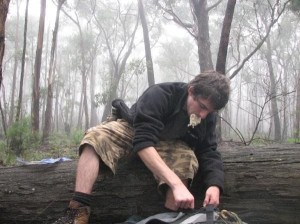Who Am I?
Quoted by Oscar Wilde a poet and playwright in the late 18th century. This was well and truly before the internet. However, this saying holds a profound truth in the information age. It shows that peoples can easily express their true self if they remain anonymous to others. Could social media platforms be a mask for the users to express their true identity?
Online Identity
Online Identity is a personality an internet user creates within an online website or community. This online identity may differ from the reality of the user’s real identity. The advantages are an online person user can be anything they want. A user that may be shy in public can go online and create an outspoken persona with online platforms.
In the digital age, we can see multiple examples of this including popular YouTubers that have created an online identity based on how they want to express themselves with their content creation. This online persona may differ from their offline personality where they are less expressive.
My Experience with Online Identity

I have luckily grown up in the digital age and witnessed multiple online communities and platforms. My very first experience with a social media platform was with Myspace. I created my Myspace page and tried to create an adventurous online persona, with multiple photos of camping and hiking. This new platform was revolutionary, as anyone could easily create an online identity and share it with friends. Unfortunately, over time I lost interest with Myspace and did not maintain my page. Myspace eventually became less popular due to its inability to innovate its social web platform.

Throughout the years I maintained my identity through online gaming. I was able to do this with the game Warcraft 3 as it had a built-in channel and network for creating clans. Instead of following my adventurous persona in Myspace I was more vocal and loud on this social platform.
Positive Image
There is an abundance of social media platforms, each catering to different aspects for the users. The likes of Facebooks, Instagram Twitter, and Snapchat are popular with social aspects. This includes sharing photos, videos and playing games with friends and family. However, they are also potent tools for businesses and branding.
The experience I have had with Facebook is from a social form. My online depiction with Facebook, Instagram, and Twitter is of a Scottish terrier enthusiast. This representation can be identified with the majority of my uploaded posts and images been Scottish terriers. Each platform has uniformity with the types of images I have posted. For example, using these platforms, the cover and profile photos all have Scottish terriers in them.
![.facebook_1544961554953[2120] Facebook Cover Photo](https://i0.wp.com/callanwright.home.blog/wp-content/uploads/2018/12/facebook_15449615549532120.jpg?w=329&h=329&crop=1&ssl=1)

![FB_IMG_1542856805216[2061] Twitter Profile Picture](https://i0.wp.com/callanwright.home.blog/wp-content/uploads/2018/11/fb_img_15428568052162061.jpg?w=329&h=329&crop=1&ssl=1)
My online identity also goes further into the online communities and relationships I have maintained. Using Facebook, I started to follow other Scottish terrier pages including the Scottish Terrier Club Inc from New South Wales Australia. With this connection, I was able to expand my knowledge and pursue my online persona further using Instagram and Twitter. Other Scottish terrier enthusiast began to view my Facebook page, which helped grow my network. This lead to being contacted by a local Scottish terrier community in the Canberra region who walks their dogs at a park every Sunday. The Canberra community had viewed my Facebook profile and knew I was an avid Scottish terrier owner by how I depicted myself online.
Furthermore, the advantage of social media is anyone can create an online persona and follow communities and other people with the same likeness and interest. Although, there is no anonymity the user stills feel safe expressing their true self online rather than offline. People can control how other online users perceive them with what they choose to show on their social media platforms. A user can choose not to show their age, so when discussing a chosen topic, they would not be disregarded due to being too old or young (Wood, AF, Smith, MJ 2004). The capability to be heard but not seen can create a better honest expression between people (Wood, AF, Smith, MJ 2004).
Career aspects of social Identity
Over time a person’s personality may change this can also be reflected in their online identities. The online identity I have created is of a Scottish terrier breed snob on most of my social media platforms. However, my plans for social media is to lead into a more professional employable appearance. When applying for a new job an employer can do a quick google search to see how you present yourself online. An employer may identify a potential employee’s specific political comments or even profile picture as not trustworthy and ultimately not hire due to those reasons. My plan to mitigate this risk is with steps I have planned to implement over time.
- More focus on my LinkedIn profile, using a more professional profile photo and treating the platform like my online resume constantly updating my experiences and adding more connections.
- Create a more extensive network for my future career path (Cyber Security) by following government agencies such as Australian Signals Directorate (ASD) on all social media platforms.
- Expand my personal brand on a content management system, where I can show my technical skills to potential employees.

References
- Oscar Wilde 1891, The Critic As Artist Part 2, The Literature Network, retrieved 09 December 2018, < http://www.online-literature.com/wilde/1305/ >
- Wood, AF, Smith, MJ 2004, Online Communication: Linking Technology, Identity, and Culture, Routledge, retrieved 08 December 2018, ProQuest Ebook central database.